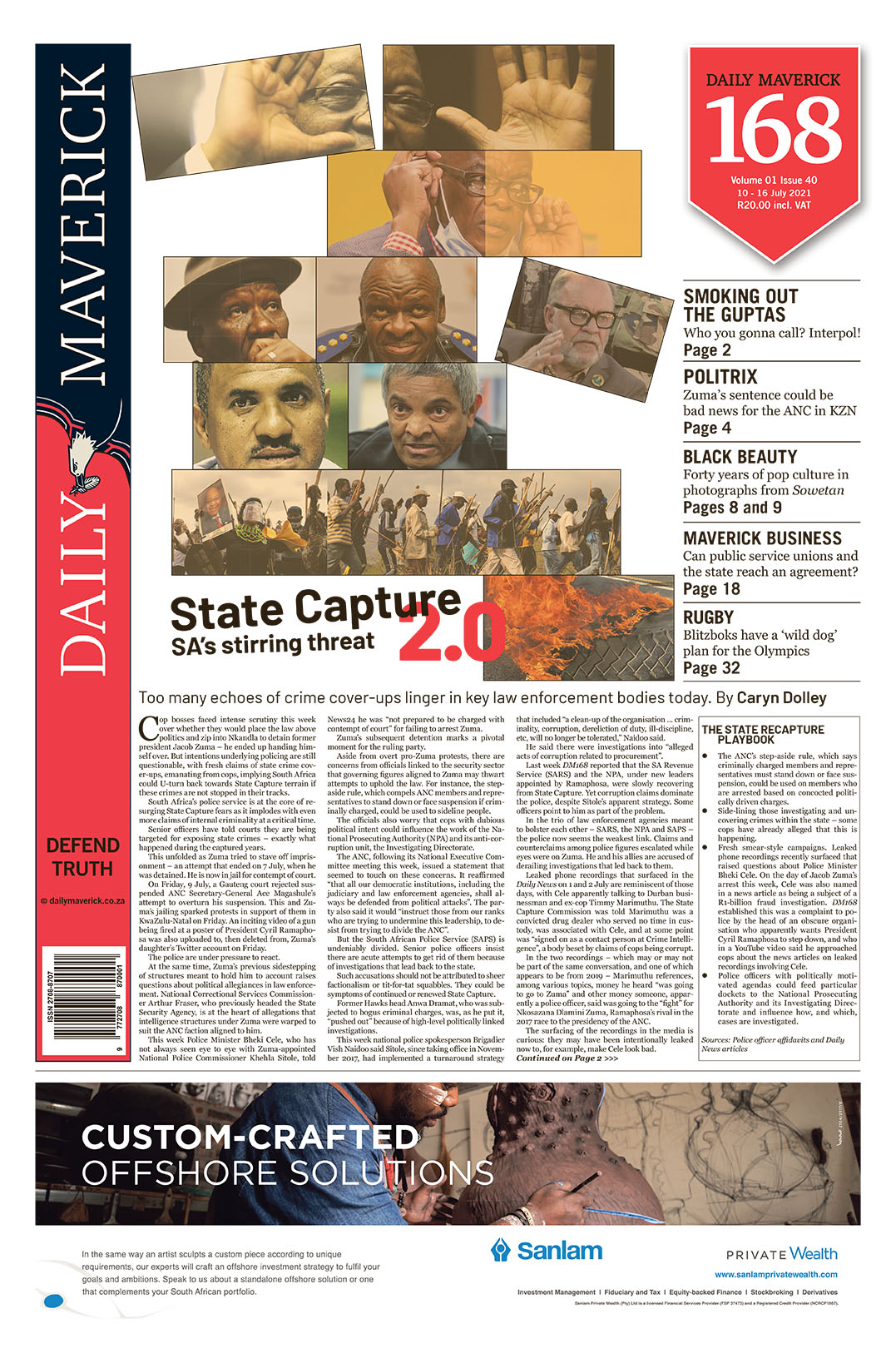BUSINESS MAVERICK 168
Evolving social media landscape: Pandemic causes significant shift in spending by brands

Separating the noise from actual behaviour, the latest South African Social Media Landscape Report shows established platforms are doing better than ever, with brands spending far more on digital advertising than ever before.
First published in the Daily Maverick 168 weekly newspaper.
Holed up at home with nowhere to go during the Covid-19 pandemic lockdowns, people’s behaviour changed. This drove significant shifts in social media usage, work, commerce and entertainment. These shifts are the focus of the latest South African Social Media Landscape Report.
Issued by media monitoring agency Ornico and independent technology market research company World Wide Worx, the report provides brands and companies with a comprehensive analysis of the South African social media market.
It includes an industry survey of 111 participants from marketing, advertising, PR and media on topics such as utility, importance, spending behaviour, current and future trends in social media in South Africa. It offers demographic, behavioural and usage statistics from more than 24,000 rural and urban participants.
Released days before the Protection of Personal Information Act (Popia) came into effect, the report reveals strong growth from Facebook, Instagram, YouTube and WhatsApp – despite the controversy over the instant messaging application’s sharing of data with Facebook.
Despite threats to delete WhatsApp, Ornico separated the noise on social media from actual behaviour, finding the damage was temporary. Users who had migrated to alternatives such as Signal and Telegram soon returned to WhatsApp.
In January, when the data-sharing story broke, WhatsApp was downloaded 45 million times; from February to April, it was downloaded a further 128 million times.
Facebook remains an effective marketing tool, with 40% of brands and companies deeming it as “very effective”.
With 27 million users – 18 million of whom are exclusively mobile users – the platform remains SA’s most popular social network. Every quarter, a million more users can be reached via advertising on Facebook.
The network, which bought Instagram in 2012 for $1-billion and WhatsApp in 2014 for $19-billion, has profited handsomely off its acquisitions.
Businesses using WhatsApp to communicate with customers and conduct transactions can buy ads on Facebook and Instagram that include a button allowing users to switch to WhatsApp and then initiate a conversation. Facebook CEO Mark Zuckerberg told CNN in April that more than a million businesses were using those “click to WhatsApp” ads.
During Facebook’s earnings call for the first quarter of 2021, the company reported total quarterly advertising sales of $25.4-billion, which is a 46% year-on-year increase.
Instagram has grown its users to more than 10 million, with 7.1 million highly active users (up from 4.7 million in 2020). Most of that engagement is driven by brands themselves.
Twitter is not as fruitful as an advertising platform, with less than half of brands and companies believing it to be effective.
New entrants, Snapchat and TikTok, are also not popular with advertisers yet – only 2% believe them to be effective.
No longer relegating the social media task to the “cool kids” in the office, Ornico CEO Oresti Patricios noted during the launch that brands were becoming more socially engaged and were allocating more resources to it.
In 2021, one in five companies was spending more than R50,000 a month on social media, whereas about 50% of companies were spending less than R10,000.
Livestreaming has become a competitive differentiator for 36% of brands (up from last year’s 28%), but a significant number of brands (63%) feel out of their depth and that they have not caught up with the technology. Those spending more on livestreaming did so on Facebook, Instagram, YouTube, LinkedIn and Twitter.
Despite predictions that influencer marketing would die by 2021, the Influencer Marketing Hub’s latest Research Influencer Marketing Benchmark Report indicated there was a major slowdown in influencer marketing spend in the early days of the pandemic but campaigns picked up again from August.
The influencer marketing industry is expected to grow to about $13.8-billion in 2021, with up to 90% of research survey respondents believing influencer marketing to be an effective form of marketing.
The Social Media Landscape Report bears that out, finding locally that 39.6% of brands used influencers, compared with 29.4% last year. Most of them (64%) used influencers for brand awareness, then sales and customer insights.
If done correctly – and where influencers are aligned with brand values, Patricios noted – influencer marketing had a direct impact on the bottom line.
But it’s not just about the numbers or creating a buzz, said Francois van Dyk, Ornico’s head of operations.
He said most of the requests he receives for monitoring and measurement list requirements such as volume of coverage or conversations, sentiment measurement as well as for the provision of an advertising value equivalent (AVE).
“What I seldom see is what the brand or organisation is trying to achieve through their communication or social media activities. What is the actual goal?”
Meghan Holmes, from intelligence technology firm YOUKNOW that provided social media data research for the report, said the data had given companies a glimpse into the lives of their customers, their behaviours and preferences.
“Social intelligence is becoming more pertinent as organisations navigate the ever-evolving social landscape of their customers.”
Holmes said “social listening” often played an important role in the collection and analysis of unsolicited social media data.
Combining social data, behavioural analytics, market research and other content sources allowed organisations to better understand the digital customer.
“The best way to propel a business forward into the digital future is to ensure that we fully understand the digital customer through multiple data points and analytics.
This would allow strategies to be built on knowing “who the customer actually is and not just who they say they are”. DM168
This story first appeared in our weekly Daily Maverick 168 newspaper which is available for free to Pick n Pay Smart Shoppers at these Pick n Pay stores.



















 Become an Insider
Become an Insider
Comments - Please login in order to comment.